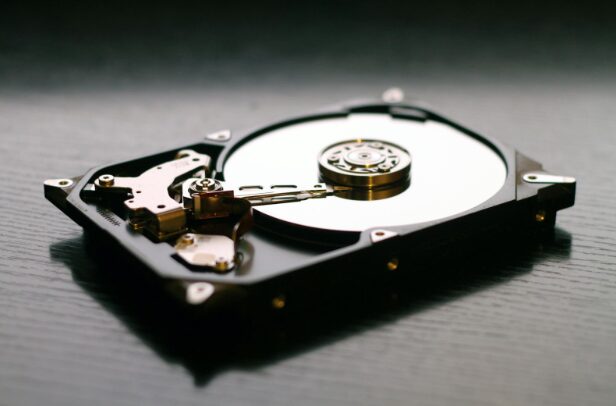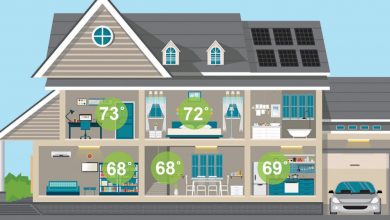How to Maximize NAS Performance: Tips for Optimizing Your Setup Beyond Choosing Hard Drives

When people think about building a Network Attached Storage (NAS) system, the conversation almost always starts with drives. And it’s true, drives matter a lot. For example, this excellent resource on the Best Hard Drives for NAS covers the right options to ensure durability and compatibility. But once you’ve chosen the right storage, the real magic lies in how you optimize and manage the rest of your NAS environment.
From networking to caching, maintenance, and power management, these factors determine whether your NAS feels sluggish or runs like a well-tuned machine. In this post, we’ll dive into the practical steps you can take to make your NAS setup faster, more reliable, and better suited for long-term use without competing directly with the subject of drives.
1. Build a Strong Network Foundation
Your NAS is only as fast as the network it runs on. Even the most powerful drives and RAID configurations won’t matter if your connection is slow. For home and small business setups, Gigabit Ethernet should be your baseline. If your NAS supports it and you move large files frequently, consider upgrading to 2.5GbE or even 10GbE networking for huge performance gains.
Cabling also matters. Use Cat 6 or Cat 6a cables for higher speeds and to avoid bottlenecks. If your switch and NAS support it, enabling jumbo frames can also boost throughput by allowing larger data packets to move across your network.
For Wi-Fi users: while wireless connections are convenient, they rarely deliver the consistency or throughput required for heavy NAS use. Always go wired for critical tasks like video editing or backup.
2. Choose the Right RAID Configuration
RAID (Redundant Array of Independent Disks) is how NAS devices balance performance, capacity, and redundancy. Picking the right RAID level has a significant impact on both speed and reliability.
- RAID 1 mirrors your data across two drives. It’s simple and reliable but halves usable capacity.
- RAID 5 offers a balance of speed and redundancy, using parity distributed across drives. It’s great for general users but can take a long time to rebuild after a drive failure.
- RAID 6 adds extra parity for more resilience, ideal for larger arrays.
- RAID 10 combines mirroring and striping, giving you strong performance and redundancy, but at the cost of higher drive usage.
When configuring RAID, consider hot spares (standby drives that automatically replace a failed one) and your workload. A business streaming data to multiple users might need RAID 10 for speed, while a home backup server could use RAID 5 for efficiency.
3. Leverage SSD Caching and Tiered Storage
One of the easiest ways to boost NAS performance is by adding SSD caching. Even if your main drives are traditional HDDs, an SSD cache can accelerate reads and writes, making your NAS feel snappier during daily use.
Some NAS models also support tiered storage, where the system automatically moves frequently accessed files to faster SSDs while keeping large, rarely accessed data on HDDs. This hybrid approach ensures you get both speed and capacity without breaking the bank.
Whether you’re running a Plex media server, hosting virtual machines, or storing design files, SSD caching can significantly reduce load times and improve user experience.
4. Keep Firmware and Software Up to Date
Performance isn’t just about hardware it’s also about software. NAS operating systems (like Synology DSM or QNAP QTS) release updates that often improve stability, speed, and compatibility with new hardware.
The same goes for drives. Many hard drive manufacturers release firmware updates that fix bugs or optimize performance for NAS environments. Keeping everything up to date ensures your system runs efficiently and avoids known issues.
Don’t forget to enable SMART monitoring and schedule periodic health checks. These diagnostic tools allow you to spot failing drives early and act before they cause downtime.
5. Practice Proactive Maintenance
A NAS isn’t a “set it and forget it” device. Like any critical system, it needs care.
- Enable alerts: Most NAS devices can email or notify you when a drive starts showing errors.
- Run integrity checks: Regularly scan for file system corruption or parity issues.
- Optimize storage pools: Rebalance workloads if your NAS offers storage optimization tools.
- Schedule backups: Even though NAS systems provide redundancy, they are not replacements for backups. Always maintain offsite or cloud backups of important data.
Proactive maintenance ensures that performance doesn’t slowly degrade and that small issues don’t snowball into catastrophic failures.
6. Manage Power and Temperature Wisely
NAS drives are designed for continuous operation, but they’re still vulnerable to heat and power fluctuations. Keeping them in a cool, stable environment can dramatically improve lifespan.
- Cooling: Ensure that your NAS has good airflow. Clean filters and fans regularly, and avoid placing the unit in enclosed cabinets where heat builds up.
- Power: Invest in a UPS (Uninterruptible Power Supply) to protect your NAS from sudden power cuts. A surge protector is also a must.
- Spin-down policies: Some NAS devices let you spin down drives when idle. While this saves energy and reduces heat, frequent spin-ups can shorten drive life. Use this feature cautiously based on your workload.
Balancing performance and longevity comes down to smart power and thermal management.
7. Optimize Workload and User Access
Different workloads stress your NAS in different ways. A small business using a NAS for document sharing has different needs than a video production studio editing directly from the NAS.
- File protocols: Use SMB for Windows environments, NFS for Linux systems, and AFP (or SMB3) for macOS. The right protocol can prevent unnecessary slowdowns.
- Task scheduling: Set backups, snapshots, or indexing tasks to run at night when the NAS is less busy. This prevents performance dips during work hours.
- Quality of Service (QoS): Some NAS devices let you limit bandwidth per user or application. This ensures one heavy user doesn’t choke the entire network.
By tailoring access patterns and workloads, you can squeeze far more performance out of the same hardware.
8. Final Thoughts
Your NAS is more than just a collection of drives; it’s the backbone of your data ecosystem. By strengthening your network, picking the right RAID setup, using SSD caching, maintaining firmware, and managing power and workloads, you can build a system that’s both fast and reliable.
Once you’ve locked in the Best Hard Drives for NAS, pair them with these optimization strategies to ensure your NAS isn’t just functional but future-proof. With the right combination of hardware, software, and maintenance, your NAS will deliver the kind of performance and resilience that keeps data safe and workflows smooth for years to come.

Source: How to Maximize NAS Performance: Tips for Optimizing Your Setup Beyond Choosing Hard Drives




